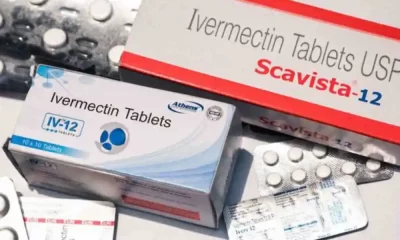Health
The Role of Occupational Therapy in Mental Health
Imagine a world where mental health is approached holistically, blending the best of diverse fields. Whether you’re an occupational therapist, a mental health professional, a student, or someone personally dealing with mental health challenges, this conversation is for you.
We’re diving deep into occupational therapy, exploring its transformative role in nurturing mental health and well-being. Buckle up for an illuminating journey!
Understanding Occupational Therapy in Mental Health
Unravelling the tapestry of mental health, occupational therapy is a dynamic player. It’s rooted in the belief that engaging in meaningful activities (or ‘occupations’) can significantly enhance our well-being.
Occupational therapists don’t work in isolation; they’re team players. They collaborate with other mental health professionals, working hand in hand in interdisciplinary teams.
Their collective goal?
To understand your unique needs and create holistic, personalised strategies that amplify your mental health journey. It’s about making life more fulfilling, one activity at a time.

Theoretical Frameworks And Models Used In Mental Health Occupational Therapy
| Theoretical Framework/Model | Description |
| Biopsychosocial Model | This model considers the biological, psychological, and social factors affecting an individual’s mental health. |
| Model of Human Occupation (MOHO) | This model views people as being shaped by their environment and occupations and underlines the therapeutic value of daily activities. |
| Canadian Model of Occupational Performance and Engagement (CMOP-E) | The CMOP-E focuses on the person’s interactive nature, environment, and chosen occupations, highlighting the importance of engagement. |
| Person-Environment-Occupation Model (PEO) | This model examines the dynamic relationship between people, their environment, and their occupations and how these components can influence health and well-being. |
| Occupational Adaptation Model | This model focuses on how individuals adapt to their environment through occupations, promoting a better sense of identity and self-efficacy. |
Assessments and Interventions in Mental Health Occupational Therapy
Peeking into the mental health occupational therapy toolbox, we find many assessments—meticulous techniques designed to understand your unique needs. It’s no one-size-fits-all here.
Post-assessment, the magic of individualised goal-setting unfolds. You and your occupational therapist collaborate, crafting a treatment plan tailored just for you.
It’s like a roadmap charting the course from where you are to where you want to be, leveraging the power of everyday activities to enhance your mental well-being. Here’s to a more fulfilling life, one step at a time.
Examples Of Interventions Addressing Mental Health Concerns
| Intervention | Description |
| Stress Management Techniques | These techniques can involve deep breathing, progressive muscle relaxation, meditation, or mindfulness practices to help manage stress levels. |
| Coping Skills Training | This focuses on assisting individuals in identifying and using effective strategies (like problem-solving, emotional regulation, and positive self-talk) to manage stressors and reduce symptoms of mental health disorders. |
| Life Skills Training | This involves teaching essential skills needed for daily life, such as time management, budgeting, cooking, or self-care tasks to promote independence and self-confidence. |
| Cognitive Behavioral Strategies | Occupational therapists might utilise cognitive-behavioural strategies to help individuals challenge and change unhelpful thought patterns, improving emotional regulation and coping strategies. |
| Sensory Integration Therapy | involves activities designed to help people manage sensory overstimulation, which can be particularly beneficial for individuals with autism or certain anxiety disorders. |
| Social Skills Training | These interventions aim to improve social interactions, communication, and assertiveness, which can be particularly beneficial for individuals with social anxiety or autism spectrum disorder. |
These interventions are individualised, tailored to the unique needs and circumstances of each person receiving occupational therapy services.

Role of Occupational Therapists in Promoting Daily Functioning and Independence
Ever considered how daily routines could be your secret mental health allies? That’s where occupational therapy shines. It helps sculpt meaningful day-to-day activities, transforming them into stepping stones towards improved mental health.
The goal?
Boosting your functional independence and overall well-being. With strategies like personalising your daily tasks or introducing coping mechanisms, occupational therapy invites you towards greater autonomy, a sense of purpose, and a more prosperous, more satisfying life.
It’s all about embracing the extraordinary in the ordinary every single day.
Environmental Modifications and Adaptations
Imagine an environment that syncs seamlessly with your mental health needs—that’s what occupational therapy aims to create. By assessing and tweaking your home or work environments, occupational therapists strive to shape spaces that support, rather than hinder, your well-being.
It could be as simple as rearranging furniture for ease of movement or as intricate as incorporating sensory-friendly elements.
The end game is to curate surroundings where you can function optimally, further enriching your journey towards better mental health. After all, the environment isn’t just where you live or work—it’s where you heal and thrive.
Group Interventions and Community Integration
Picture a circle of support, a community rallying around shared experiences and collective growth. That’s the power of group interventions in mental health occupational therapy.
These sessions aren’t just about therapy; they’re about building bridges of understanding, fostering social interaction, and honing essential skills. They turn therapy into a team sport, where shared stories, laughter, challenges, and victories become stepping stones towards better mental health.

Home Care Services and Community-Based Practice
Role Of Occupational Therapy In Home Care Settings
Have you ever thought about the comfort of your home doubling as a hub for mental health support? It’s where your everyday space becomes the stage for personalised therapeutic interventions. But it doesn’t stop at the doorstep.
Apart from home care services, occupational therapists take to the streets, too, providing community-based services to enhance mental health outcomes. Imagine skills training workshops, neighbourhood support groups, or inclusive recreational activities, all weaving a community fabric of well-being.
Importance of individualised and client-centred care in the home and community-based therapy
Occupational therapists create customised strategies that cater to your needs in the environments you connect with the most. It is widely acknowledged that there is no mental health solution, which varies from person to person. You are the protagonist in your own life, and the therapist is there to assist you in writing your story in a way that brings you the most satisfaction.
Final Words
As we wrap up, we encourage everyone—professionals looking for open OT positions and individuals alike—to delve into the empowering realm of mental health occupational therapy. Remember, it’s a holistic journey, intertwining everyday activities with our mental well-being.
So, let’s harness the potential of these therapeutic interventions. Here’s to exploring, learning, and cultivating better mental health and well-being, one meaningful occupation at a time.
SEE ALSO: Opill’s FDA Approval: First Over-the-Counter Birth Control Pill In The US
Health
Report Causes Pfizer Stock to Climb Approximately $1 Billion Acquired by Starboard

(VOR News) – According to a rumor that activist investor Pfizer Starboard Value has taken a holding in the struggling pharmaceutical business that is expected to be worth around one billion dollars, the stock of Pfizer (PFE) is on the increase in premarket trading on Monday.
This comes after the report was made public. The report was made available to the general public following this. Starboard Value was successful in moving forward with the acquisition of the position.
Starboard is said to have approached Ian Read, a former chief executive officer of Pfizer, and Frank D’Amelio, a former chief financial officer, in order to seek assistance with its goals of boosting the performance of the company, according to the Wall Street Journal. Read and D’Amelio are both former Pfizer executives.
The purpose of this is to facilitate the accomplishment of its objectives, which include enhancing the overall performance of the firm.
In their previous jobs, D’Amelio and Read were chief financial officers.
It is stated in the report that the hedge fund is of the opinion that Pfizer, which is currently being managed by Albert Bourla, who succeeded Read as Chief Executive Officer (CEO) in 2019, does not demonstrate the same level of mergers and acquisitions (M&A) discipline that Read did. Bourla took over for Read in 2019. Read was succeeded by Bourla in the year 2019.
Pfizer, a multinational pharmaceutical conglomerate, has made substantial investments in the acquisition of more companies that are involved in the research and development of cancer medicines.
These businesses have been acquired for billions of dollars. The biotechnology company Seagen, which was acquired by Pfizer in the previous year for a price of $43 billion, is included in this category. One of the businesses that can be classified as belonging to this category is Seagen.
In spite of the fact that the S&P 500 Index experienced a 21% increase in 2024.
No major trading occurred in Pfizer stock that year.
Due to the fact that the demand for Pfizer’s COVID-19 vaccines fell after the firm reached its pandemic peak in 2021, the share price of the corporation has decreased by over fifty percent since that time.
This drop has occurred ever since the company’s shares reached their maximum peak, which was during the time that this decline occurred. Not only have they not changed at all, but they have also remained essentially stable. This is in contrast to the S&P 500, which has gained 21% since the beginning of this year.
Recently, the corporation was forced to take a hit when it decided to recall all of the sickle cell illness medications that it had distributed all over the world.
Fears that the prescription could lead patients to experience severe agony and possibly even death were the impetus for the decision to recall the product. In spite of the fact that Pfizer’s stock is increasing by almost three percent as a result of the news that followed the company’s decision, this is the circumstance that has come about.
SOURCE: IPN
SEE ALSO:
New Study Reveals Drinking Soda Pop Increases the Risk of Stroke
The Mpox Vaccine’s Protection Decreases Within a Year; Booster Requirements
Health
New Study Reveals Drinking Soda Pop Increases the Risk of Stroke

A recent report from global research indicates that excessive consumption of coffee or soda pop is associated with an increased risk of stroke, although the intake of black and green tea is correlated with a reduced risk. Excessive consumption of soda pop or coffee warrants caution!
Recent research indicates that it may substantially elevate the risk of stroke.
Consuming four cups of coffee daily elevates the risk of stroke, according to studies, although ingesting 3-4 cups of black or green tea daily typically offers protection against stroke. Additionally, consume more coffee; it may reduce your risk of mortality.
Recent findings from global research studies co-led by the University of Galway and McMaster University, alongside an international consortium of stroke researchers, indicate that soda, encompassing both sugar-sweetened and artificially sweetened variants such as diet or zero sugar, is associated with a 22 percent heightened risk of stroke. The risk escalated significantly with the consumption of two or more of these beverages daily.
Stroke Risk Fizzy Drinks and Soda Pop
The correlation between fizzy drinks consumption and stroke risk was most pronounced in Europe, the Middle East, Africa, and South America. Women exhibit the most elevated risk of stroke from bleeding (intracranial hemorrhage) associated with fruit juice beverages. Consuming over 7 cups of water daily diminishes the likelihood of stroke due to a clot.
Researchers observed that numerous items advertised as fruit juice are derived from concentrates and have added sugars and preservatives, potentially negating the advantages often associated with fresh fruit and instead elevating stroke risk.
Fruit juice beverages were associated with a 37 percent heightened risk of stroke resulting from bleeding (intracranial hemorrhage). Consuming two of these beverages daily increases the risk thrice.
Consuming over four cups of coffee daily elevates the risk of stroke by 37 percent, although lower consumption levels do not correlate with stroke risk. Conversely, tea consumption was associated with an 18-20 percent reduction in stroke risk. Additionally, consuming 3-4 cups daily of black tea, such as Breakfast and Earl Grey varieties, excluding green and herbal teas, was associated with a 29 percent reduced risk of stroke.
Consuming 3-4 cups of green tea daily was associated with a 27 percent reduction in stroke risk. Notably, the addition of milk may diminish or inhibit the advantageous effects of antioxidants present in tea. The lower risk of stroke associated with tea consumption was negated for individuals who added milk.
Disclaimer: This article is intended solely for informational reasons and should not be considered a replacement for professional medical counsel. Consistently consult your physician regarding any inquiries pertaining to a medical problem.
Related News:
Starbucks Faces Sales Decline Amid Price Fatigue and Rising Competition
Starbucks Faces Sales Decline Amid Price Fatigue and Rising Competition
Health
Following a Diagnosis of Breast Cancer, What Else Should You Know?

(VOR News) – Even though breast cancer affects one in eight American women, receiving a diagnosis can make a woman feel isolated.
Experts in breast cancer from the American College of Physicians (ACS) advise patients on how to manage their disease so that they may better cope with this awful information.
First, the kind and stage of breast cancer dictates the course of your care.
In addition to immunotherapy and chemotherapy, there are various surgical options available for the treatment of breast cancer.
Women of African descent are disproportionately affected by triple-negative breast cancer, an extremely aggressive form of the disease that has never proven easy to treat.
According to the American Cancer Society, pembrolizumab (Keytruda), an immunotherapy, has been shown to be helpful when combined with chemotherapy and is currently the recommended course of treatment for certain combinations of triple-negative breast cancer.
In her presentation, Dr. Katharine Yao said, “It’s really important that the patient and physician discuss the patient’s preferences and values when deciding what type of treatment to pursue and that they have an honest, individualized discussion with their care team.”
She is currently responsible for developing breast cancer treatment recommendations for more than 575 hospitals and institutions nationwide in her role as chair of the American College of Surgeons’ National Accreditation Program for Breast Institutions (NAPBC).
Yao, vice chair of research at Endeavor Health NorthShore Hospitals in New York, pointed out that each decision made about a patient’s treatment plan should take her preferences and diagnosis into consideration.
She ought to think about whether she would prefer a mastectomy—a surgical procedure that involves removing the entire breast with or without reconstruction—or a lumpectomy, which involves a surgical procedure that spares part of the breast tissue.
She stated that “the breast cancer you have may be very different from the breast cancer you hear about in your neighbor, colleague, or friend” in a press release issued by the American Cancer Society (ACS).
“Consider that while discussing breast cancer with others.”
Throughout your journey, it is critical that you look after your emotional health because having breast cancer may have a detrimental impact on your mental health.
“Getting a cancer diagnosis does not mean that everything in your life stops to be normal.” Director of the Fellowship in the Diseases of the Breast program at the Winthrop P. Rockefeller Cancer Institute at the University of Arkansas and state head of the American Cancer Society Commission on Cancer for Arkansas, Dr. Daniela Ochoa She thinks adding the burden of a cancer diagnosis and treatment to all the other pressures in life may be taxing.
“Managing stress and emotional health is vital component of a treatment plan.”
Ochoa recommends clinically trained psychologists and social workers who have assisted people in coping with cancer to anyone receiving treatment. Learning coping techniques might also be facilitated by joining cancer support groups or cancer wellness initiatives.
Breast cancer specialists say your care team is crucial.
The American Cancer Society (ACS) defines comprehensive care as having support at every stage of the procedure from surgeons, oncologists, patient navigators, nurses, social workers, psychologists, and other specialists.
After receiving a breast cancer diagnosis, women should see a surgeon or medical oncologist to explore their options; nevertheless, treatment shouldn’t be discontinued after just one appointment or after surgery is over.
Additionally, you can ask trustworthy friends or family members to accompany you to appointments and aid you with research or notes. They could serve as a network of support for you.
Yao stated in his talk that “one of the most important things is that patients should search out a team they have confidence in, that they trust will have their back when they need it, and a team they feel they can get access to and that will help them when they are in need.”
SOURCE: MP
SEE ALSO:
The Mpox Vaccine’s Protection Decreases Within a Year; Booster Requirements
COVID was a Paradigm Shift in Health Policymaking, Says Commissioner Stella Kyriakides.
Rwanda Reports 8 Deaths Linked To Ebola-Like Marburg Virus Days After It Declared An Outbreak
-

 News3 years ago
News3 years agoLet’s Know About Ultra High Net Worth Individual
-
Entertainment2 years ago
Mabelle Prior: The Voice of Hope, Resilience, and Diversity Inspiring Generations
-

 Health3 years ago
Health3 years agoHow Much Ivermectin Should You Take?
-

 Tech2 years ago
Tech2 years agoTop Forex Brokers of 2023: Reviews and Analysis for Successful Trading
-

 Lifestyles2 years ago
Lifestyles2 years agoAries Soulmate Signs
-

 Movies2 years ago
Movies2 years agoWhat Should I Do If Disney Plus Keeps Logging Me Out of TV?
-

 Health3 years ago
Health3 years agoCan I Buy Ivermectin Without A Prescription in the USA?
-

 Learning2 years ago
Learning2 years agoVirtual Numbers: What Are They For?
